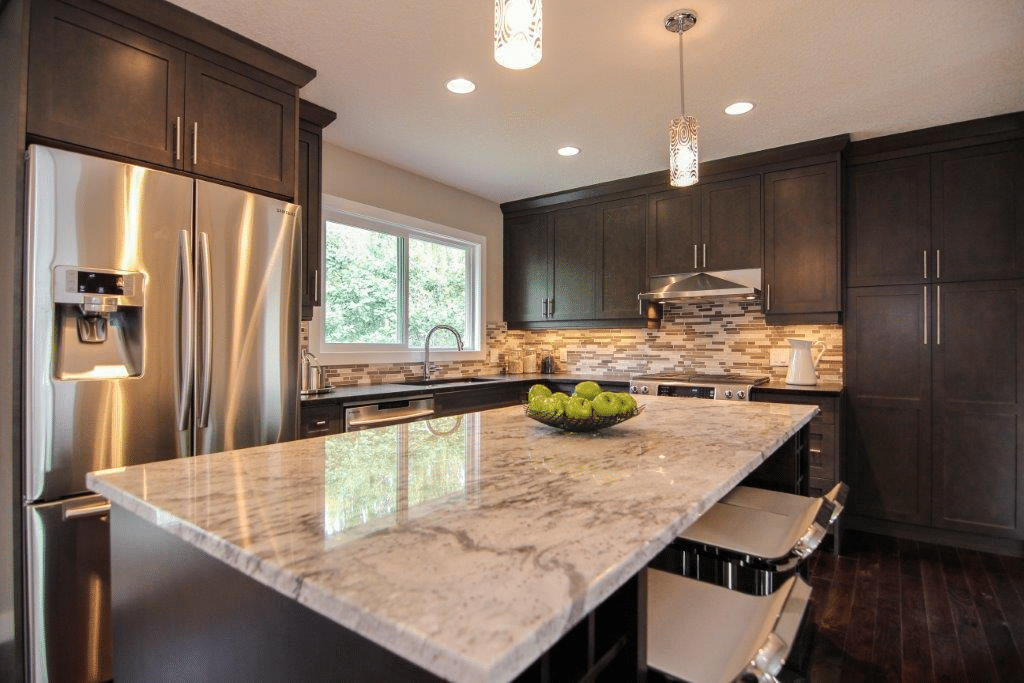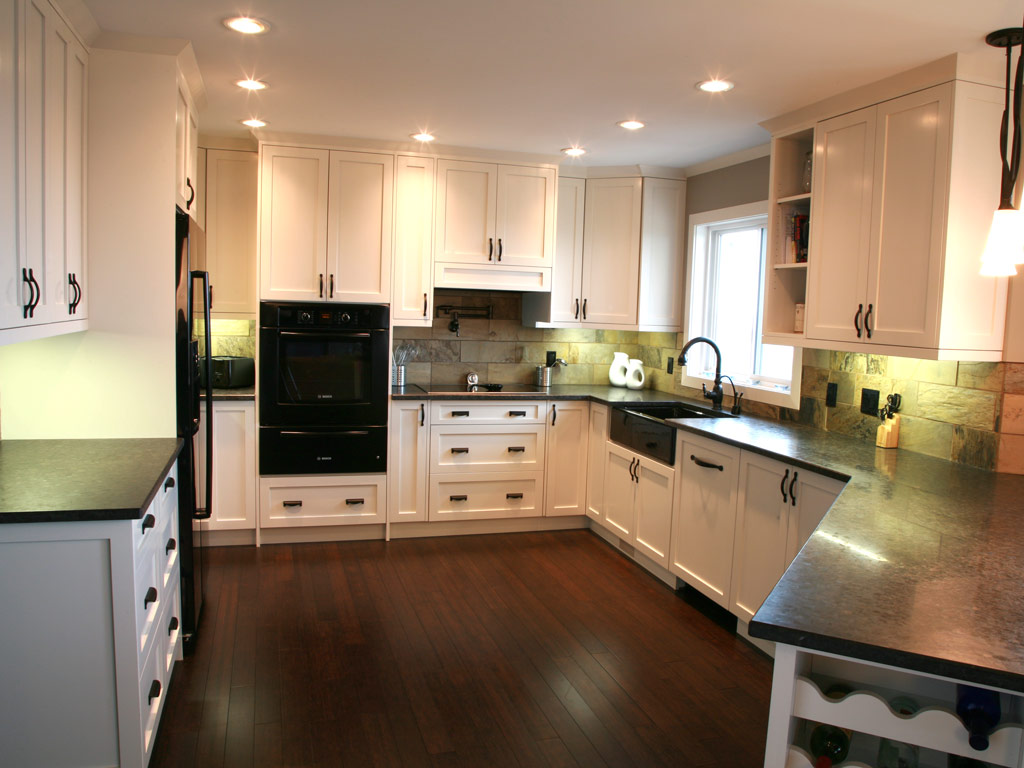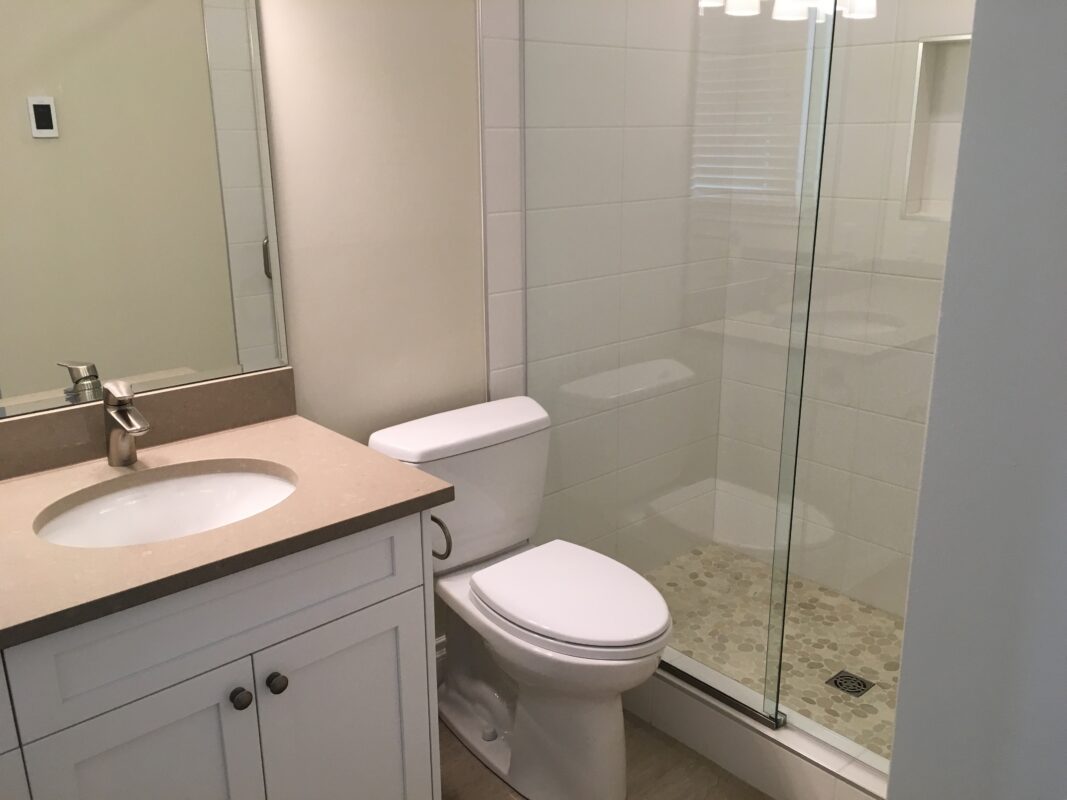Lighting Renovations – Recessed Lighting Pros & Cons

Lighting can make a world of difference in the setting of a room. If you want your house to look perfect, lighting is something that you will need to give quite a bit of attention to. Sometimes, due to improper lighting, the house tends to look dark in some spots. In such cases, recessed lighting can be just the thing that you need. Therefore, if you are thinking of completing lighting renovations in your home, thinking about recessed lighting might be a good idea.
Recessed lighting is the light fixtures installed into hollow openings of a ceiling, floor, or wall. The light is concentrated as the installation is confined to a hollow space, making it look like a narrow spotlight. They are the perfect option if you want to attract specific attention to a particular area of your house during lighting renovations.
The process of installation
The recessed light fixture comprises of two main components. The first one is the house that fits around the light. This part is hidden within the ceiling or wall and includes the hardware as well. Trim is the second component that is visible to all.
Trim needs to be given excessive attention when deciding the installation of recessed lights during your lighting renovations because this is the part that would be visible. The aesthetic of the room will significantly be affected by it. Therefore, you need to think about the style, depth, and size of the trim. The size of the room is important, as well. For instance, you will need a recessed light with a larger trim if it is going to be installed in a larger room.
When deciding on where the recessed lights should be placed, you need to first select the area where you want the focus to be. The light is to be centered over that specific area. You can then space the remaining lights around that area for highlighting. Excessive recessed lights in a room will spoil the whole look. You need to make sure that the lights are spread apart and are not too close to the wall.
The types of recessed lights for lighting renovations
Recessed lights can be categorized according to the type of trims they have and their sizes. Let us shed some more light on the various options you have when it comes to selecting recessed lighting.
Type of trims
Trim has fitting inside the housing while it extends outside to form an outer ring. This is the part that is visible to you when you look at installed recessed lighting. Some common types of trims you will come across include;
Baffle trim
This is perhaps the most common type of recessed lighting you will find. It is preferred by many as it minimizes glare. The bulb is not flush with the ceiling as it fits inside the fixture.
Reflector trim
The bulb is fitted inside the fixture in this one as well. It has mirrored surfaces, which makes the lighting more enhanced. You can also find tinting on some fixtures.
Open Trim
In this type, the bulb is nearly flush with the ceiling leading to unrestricted illumination.
Eyeball Trim
This one is quite popular as you can pivot it to change the focus of the light wherever you want.
Gimbal Trim
Similar to the eyeball trim but the lamp does not extend significantly below the ceiling. Some light is blocked by the housing when it is fully pivoted.
Pinhole Trim
With this type of recessed light, the light is narrowed down to a tight beam. You can use this for spotlighting certain items or areas.
Wall-Wash Trim
Half the light is covered by the shield, and thus, the light is restricted to a specific area. This one works well if you want to highlight any features like a painting.
Shower Trim
This one has a tempered glass lens and is usually used in bathrooms or over a shower.
Sizes of recessed lighting
You will mostly find recessed lights within the range of 3 and 6 inches of diameter. Which size would be suitable for you depends on the location and purpose of the light.
Modern décor styles gel well with small recessed lights. They highlight specific areas. On the other hand, larger lights are perfect for traditional décor and can do wonders for your room lighting. The height of the ceiling needs to be given attention while deciding on the size of the light. Keep in mind that if the ceiling is high, the light will be wider and diffused.
Pros and cons of recessed lighting
When it comes to transforming the ambiance of your home, lighting plays a crucial role. Among the myriad lighting options available, recessed lighting has gained popularity for its sleek and modern appearance. As you embark on your renovation journey, it’s essential to weigh the pros and cons of recessed lighting to make an informed decision that aligns with your aesthetic and practical needs. If you are confused about whether you should think about recessed lights when doing your lighting renovations in your house, let us make things easier for you.
Pros
Aesthetic Appeal
Recessed lighting is known for its clean and minimalist look. The fixtures are tucked away in the ceiling, creating a seamless and unobtrusive appearance. This design element contributes to a modern and sophisticated atmosphere in any room.
Versatility
One of the significant advantages of recessed lighting is its versatility. It can be used in various spaces, from kitchens and living rooms to bedrooms and bathrooms. Recessed lights are available in different sizes and shapes, allowing for flexibility in design and placement.
Focused Illumination
Recessed lights are excellent for providing focused and targeted illumination. They can be strategically placed to highlight specific areas, such as artwork, architectural features, or task areas in the kitchen. This ability to direct light precisely where it’s needed enhances functionality and aesthetics.
Space Saving
Unlike traditional pendant or floor lamps, recessed lighting doesn’t take up any floor or wall space. This can be especially advantageous in smaller rooms where maximizing space is essential. The unobtrusive nature of recessed lights helps maintain a clean and open feel.
Energy Efficiency
Many recessed lighting fixtures are compatible with energy-efficient LED bulbs. This not only reduces energy consumption but also contributes to lower utility bills. LED technology also ensures a longer lifespan for the bulbs, reducing the frequency of replacements.
Cons
Installation Challenges
Installing recessed lighting can be more complex than other lighting options. It often involves cutting into the ceiling and navigating the wiring, which may require professional assistance. This can add to the overall cost of the lighting installation.
Limited Adjustability
While recessed lights offer focused illumination, they lack the adjustability found in some other lighting fixtures. If you desire the ability to change the direction or intensity of the light, recessed lighting may not be the ideal choice for every space.
Initial Cost
The upfront cost of recessed lighting, including fixtures, bulbs, and installation, can be higher than some other lighting options. However, it’s essential to consider the long-term benefits, such as energy savings and durability, when evaluating the overall value.
Heat Generation
Traditional incandescent bulbs, if used in recessed lighting, can generate heat. This may be a concern in confined spaces or rooms with lower ceilings. Opting for LED bulbs can mitigate this issue, as they produce minimal heat.
Aesthetic Limitations
While many appreciate the modern and unobtrusive look of recessed lighting, others may find it too understated. For those who prefer more ornate or decorative lighting fixtures, recessed lighting may not align with their design preferences.
Final words
As you plan your renovation project, carefully weigh the pros and cons of recessed lighting to determine if it’s the right fit for your space. Consider factors such as aesthetics, functionality, and budget to make an informed decision that enhances the overall atmosphere of your home. Whether you choose recessed lighting for its sleek design or opt for alternative options, thoughtful lighting decisions can truly transform your living spaces.
They will bring value to the room and will make sure that the lighting enhances the décor of your house to many folds. The team at Lifestyle Renovations can help you determine the best type of lighting for your next renovation.



